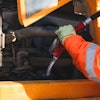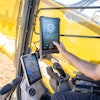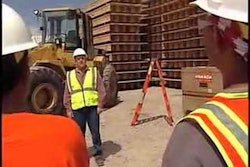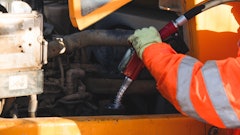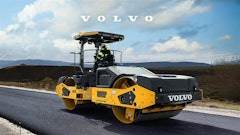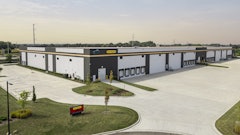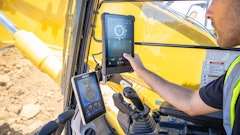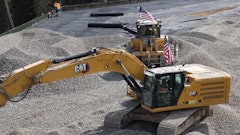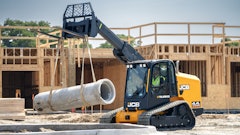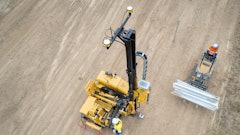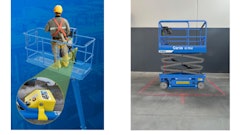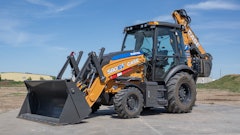
Most every contractor gathers employees first thing on Monday morning to address safety-related topics. But how well are these meetings received? What real purpose do they serve?
While safety meetings have become the norm, what can you do to make sure they are effective? To help you get started, we asked three construction firms, known for their high-level safety programs, what they do to ensure their meetings add value and get the point across.
Interactive and relevant
T.B. Penick & Sons, Inc., based in San Diego, CA, is a general contractor involved in structural concrete, design/build, prime trade, civil and innovative concrete. About 18 months ago, Pete Lupo, director of safety, revamped the company's safety meetings, which are typically held for about 15 minutes every Monday morning, "in the dirt" on the jobsite. Attendees include Penick employees and any subcontractors who may be working on the job.
Safety meetings give the company the ability to promote safety practices on a weekly basis. "There are hidden hazards in every single task we perform," says Lupo. "If we don't preplan and talk about what we're going to do, we're at a much higher risk of hurting ourselves."
The meetings also emphasize the company's moral obligation to protect the health and safety of its employees. "No one wants to see anyone get hurt," Lupo states. "Working at heights is one of the most dangerous tasks we do - building structural concrete buildings, parking structures, etc."
The main objective behind refocusing the safety meetings was to make them more interactive and relevant, and thus more effective.
Previously, the company relied on preprinted safety topics. "We passed around the clipboard and asked everyone to sign the sheet at the bottom," Lupo indicates. "We had various levels of what each supervisor talked about."
Now, supervisors are essentially given a blank sheet of paper listing the job name, number and date. They are required to choose a topic related to the week's work and list five relevant items. To gain ideas, supervisors are given three main sources of information: the company safety policy booklet, the Cal/OSHA pocket guide and a booklet of predesignated topics that the company has developed.
"We make them fill in specific items [that relate to the topic]," he says. "It can't be generic, such as fall protection. We make them list if they talked about anchor points, inspection, training, etc. It's a little bit more interactive."
As part of the meetings, they also discuss near-miss accidents that may have occurred on a Penick jobsite, or any jobsite. Those near-misses can also prompt a mid-week safety meeting, if deemed necessary.
Giving employees the ability to offer suggestions is another component of the safety meetings. "We open the meeting up to include comments from employees and tradespeople," Lupo says. "It's an open forum for everyone where we can highlight areas where we've been doing a good job and others where we may need to make improvements."
Lupo feels one of the real keys to the success of the current safety meetings lies in follow-up and review. Project managers and safety inspectors will look at the previous month's safety meetings. "It's a two-pronged approach," he says. "With a follow up and review in place, we're making sure that safety isn't just getting pencil-whipped. If no one ever checks, you can't be sure it's being done."
Another focus of the safety meetings is to address items on the safety survey. For example, if a safety inspector notes that an operator was working around a tractor without an orange vest, he is required to cover that in the next safety meeting to ensure it doesn't reoccur. "We try to cover as much as we can as to what's happening on a specific job," Lupo says. "We don't want unsafe practices to be repeated."
Safety meetings are perceived as continuing education at Penick. "We want our employees to be trained and on the cutting edge of safety," Lupo asserts. "We feel that if they work safe, they will be productive, which is a benefit to themselves and to us. We strongly believe that if we don't provide safety training and equipment, we won't be productive. A happy, healthy employee builds a happy, healthy corporation. Without healthy employees, there would be no construction company."
Lupo has seen safety meetings change in recent years, noting that if contractors don't take it seriously, clients will. "We've seen clients take a much greater interest in safety," he says. "They never used to ask about a company's safety program. Now, they're not only asking, but are contractually requiring specific safety requirements. There's definitely a more global awareness about safety. Now, if you're not a safe company, you can't even pre-qualify to bid, let alone bid a job."
Safety is not an option
Skanska USA Building Inc., Parsippany, NJ, is a commercial construction firm with a global employee base covering various regions of the U.S., South America and Europe. Worldwide, safety affects about 56,000 employees.
To accomplish the company's safety goals, the safety leadership team focuses on presenting a positive impression about safety. "Safety has gone from having a set of rules and telling people what they're doing wrong, to putting a positive spin on it by also focusing on what they're doing right," says John Williams, a senior superintendant in California.
In addition to weekly safety meetings and monthly safety memos, each job is preceded by a preconstruction safety meeting that includes the subcontractor's full-time superintendent on the project or the foreman on site, their project manager and the company safety director. "If all three people don't show up, we don't have the meeting," says Williams. "We discuss safety, and that's all we discuss."
As it relates to project safety meetings, Williams focuses on these areas:
- Make it personal - "Nothing says boring more clearly than reciting chapter and verse, and portraying safety as a set of rules," says Williams. "The challenge is to make safety positive and to make people know there are personal benefits to working safe for them and their families. That's the bottom line."
- Make it relevant - Williams acknowledges there are services that provide preprinted topics for safety meetings. "But they seldom apply to what you're doing," he says. "I see people read through them verbatim, and attendees fall asleep because it has nothing to do with what they're doing. It's just an exercise, not a purposeful meeting. Too often people go through the motions of a safety meeting without ever really understanding the intent of it."
Williams prefers to have his safety leaders discuss work in progress, potential/real hazards and what to do about them, the upcoming work plans, etc., and allow each attendee - which can be both Skanska employees and subcontractors - to express concerns about what's going on and to alert others about what they're doing. - Make it educational - In addition to the weekly safety meetings, Williams pulls together printed articles, information, etc. that may pertain to a particular task, and provides them to employees in the form of weekly safety memos. For example, the crane safety article that appeared in the September 2007 issue of Equipment Today offered information Williams felt was beneficial to jobs related to structural steel.
"I try to find related topics for everything we're doing," he says, "especially jobs such as high-risk excavations, steel erection, fall protection, equipment operation, etc." - Preplan the safety meeting - Prepare an agenda, handouts, etc. ahead of the meeting. "Preparing the workforce properly deserves some attention," Williams stresses.
- Dictate the audience - Under no circumstance does Williams call a general all-hands safety meeting where all the workers come together on the jobsite, as the weekly safety meeting. "These types of meetings are not effective," he says. "Too often, there are too many people not paying attention. Not everyone shows up. Those who do show up often have sidebar conversations and people just don't pay attention.
"The intent of the safety meeting is to address specific safety hazards with a particular task," he continues. "As a general contractor, I can't address what the electricians, plumbers, pavers, concrete contractors, etc. are doing."
Instead, Williams conducts project safety meetings with the superintendents and foremen assigned to the project, who meet weekly to receive handouts and discuss current safety issues/concerns. They in turn take that information to their workers to address concerns about their own tasks, as well as tell them what's on the horizon with the project.
"When you dictate the audience and the attendees, you narrow the focus so the attention span can be addressed," he says. - Include weekly safety inspections - All superintendents/foremen are required to conduct weekly safety inspections. These safety inspections, and their corrective measures, are discussed during the weekly safety meetings, as opposed to simply being passed out in written format.
"They can pertain to anything on the jobsite - excavation safety, power tools, lighting, etc.," Williams says. "A huge factor in these inspections is to focus on positive things people are doing. People do a lot of things right that don't get acknowledged." - Document the safety meeting and distribute minutes - Document who attended, the meeting number and date. "You can talk all you want, but if you don't have documentation, it didn't happen," Williams points out. "Discuss what was addressed and who led that part of the conversation."
As an overall rule, Williams emphasizes that whatever requirements you put in place in regards to safety, religiously enforce them, and follow up by doing what you say you're going to do. "If you require personal protective equipment, don't let people work without it," he says. "Don't make exceptions. When you do, you show that safety isn't a priority. We want workers to go home safe every night. Working safe is not optional here. While the way we stress safety isn't the only way companies can promote it, this is the way we've found it to be successful."
A condition of employment
Markham Contracting Co. Inc. is a site prep development contractor based in Phoenix, AZ. An Experience Modification Rating (EMR) of .71 might be acceptable for some contractors, but not for this company. "Truthfully, we were not pleased with that," says Michael Rose, safety director. "We were operating in the .58 to .60 range."
According to Rose, one of the secrets to establishing a successful safety program is to get management to buy into it, and to make it mandatory. "Whether it is wearing a seatbelt or wearing a vest, it is not negotiable," he stresses. "It is a condition of employment."
This also applies to management. "If we expect [our employees] to wear a vest, we have ours on," he says.
Safety meetings are another important part of the equation. Rose makes them effective in several ways. For one, management participates in the Monday morning meetings to emphasize their importance. Hollis Loper, vice president of equipment operations, and Rose go to a different jobsite each week. "I think the awareness that Mike and I put to all of the crews makes them more aware," says Loper. "It is on their minds more because management participates in the safety program."
Another tactic is to tailor the meetings to individual projects. "We may have 20 foremen conducting a safety meeting on Monday morning," says Rose, "but it is not necessarily all on the same subject.
"Sometimes we will provide a DVD on a particular jobsite," Rose adds. "Lately, we have focused on dust and track-out because of health and environmental concerns. In addition, the EPA is coming down hard on Arizona, and we stand to lose billions of dollars in highway funding if we don't comply."
There are many generic construction topics, in both Spanish and English, available for free from the State Compensation Fund (SCF) of California. However, foremen are encouraged to discuss subjects pertinent to the job at hand. "You can pull these generic topics right off the web site," says Rose. "But a safety meeting topic on scaffolding may not be perfect for a group that is out there doing paving."
In an effort to present pertinent information, Rose helps the cause by creating a summary of all the month's incidents, injuries and near misses that he provides to the foremen, along with some suggested safety topics.
Markham Contracting also encourages employees by offering them the ability to earn safety awards. "We have a safety incentive program with safety awards if employees and their crews attain 90 days without incident or injury," Rose says. "Our safety incentive program is geared to create peer pressure to be safe. You are held accountable for the actions of everyone on your crew. You can lose your safety award because of his or her mistake."
The company has always practiced strict pre-employment drug testing and post-accident and for-cause drug/alcohol testing, but random testing was sporadic at best. Two years ago, the company began a rigid random drug testing program geared at eliminating employees who abuse drugs, which in turn can promote safety on the job. "The Bureau of Labor and Statistics puts out statistics that tell us the construction industry averages 20% drug users," says Rose. "Our percentage is a lot lower.
"We are committed to not have drugs be a factor," he adds. "We do random drug testing once a month. Fifteen percent of the employees are tested each month across the board for shop, office and field personnel."
When the company began rigid random testing, it lost 18% of the people tested. "Since then, we religiously test 15% of our employees almost every month," Rose notes. "Now, it is not unusual for us to test a whole group of people and not have a single positive."
